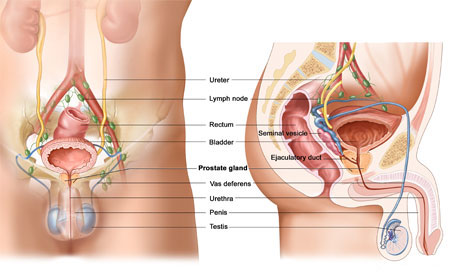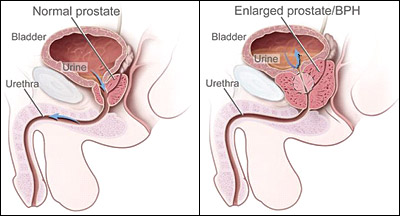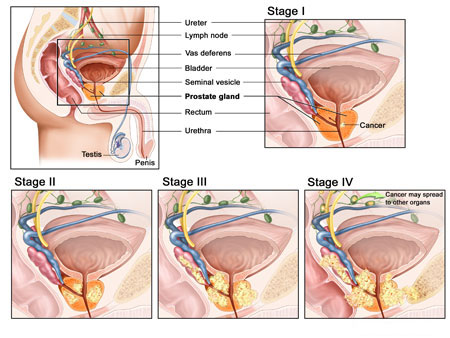About the Prostate
The prostate is a walnut-sized gland located in front of the rectum and underneath the urinary bladder. It is found only in men.
The prostate’s job is to make some of the fluid that protects and nourishes sperm cells in semen. Just behind the prostate
gland are the seminal vesicles that make most of the fluid for semen. The urethra, which is the tube that carries urine and semen
out of the body through the penis, runs through the prostate.

Prostate Cancer
Several types of cells are found in the prostate, but over 99% of prostate cancers develop from the gland cells. Gland cells make the
prostate fluid that is added to the semen. The medical term for a cancer that starts in gland cells is adenocarcinoma.

Other types of cancer can also start in the prostate gland, including sarcomas, small cell carcinomas, and transitional cell carcinomas.
But because these other types of prostate cancer are so rare, if you have prostate cancer it is almost certain to be an adenocarcinoma.
The rest of this document refers only to prostate adenocarcinoma.
Some prostate cancers can grow and spread quickly, but most of them grow slowly. In fact, autopsy studies show that many older men
(and even some younger men) who died of other diseases also had prostate cancer that never affected them during their lives.
In these studies, 70% to 90% of the men had cancer in their prostate by age 80, but in many cases neither they nor their doctors even
knew they had it.

Pre-cancerous changes of the prostate
Some doctors believe that prostate cancer begins with very small changes in the size and shape of the prostate gland cells. These changes are
known as PIN (prostatic intraepithelial neoplasia). Almost half of all men have PIN by the time they reach age 50. In PIN, there are changes
in how the prostate gland cells look under the microscope, but the cells are basically still in place -- they don’t look like they’ve
gone into other parts of the prostate (like cancer cells would). These changes can be either low-grade (almost normal) or high-grade (abnormal).
If you have had a prostate biopsy that showed high-grade PIN, there is a greater chance that there are cancer cells in your prostate. For this
reason, you will be watched carefully and may need another biopsy.
Last Medical Review: 07/30/2009
Last Revised: 11/24/2009
|